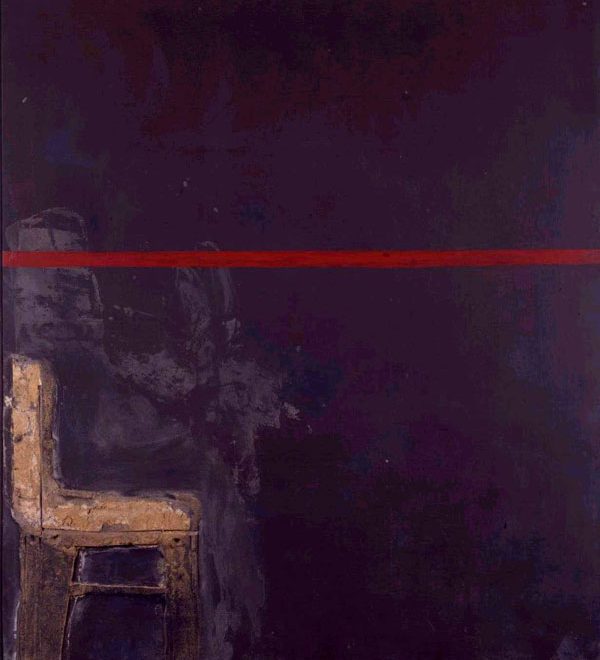The red line
The historiography of art accustoms us to assign the various manifestations of art – and their corresponding developments in space and time – to rigid conceptual demarcations which ultimately make it hard to understand the true dimension and complexity of the artistic phenomena of modernity. Although this exhibition sets out from one of the classic conceptual devices of historiography, abstraction, it nevertheless seeks to underline the many points of convergence that have appeared (and are still appearing) between the explorations of form carried out by the various generations of Spanish artists from the 1930s to the present day. It is no accident that the title of the exhibition, The Red Line, is, to a large extent, a homage to one of the classic figures of contemporaneity, Antoni Tàpies, whose work breached all the boundaries imposed on artistic creation by the critics. His painting La ligne rouge (Negre amb línia vermella) (The Red Line [Black with Red Line]), dated 1963 and belonging to the IVAM, is to be understood as a veritable crossroads where there is a masterly convergence of the figurative impulse, experimentation with matter and the breakdown of the two-dimensional nature of painting. Within the same spirit of transgression of genres and revision of the very concepts of historiography, this exhibition devoted to Spanish abstract art avoids a narration of the chronological sequence of the development of abstract art in Spain. Instead, the design of the exhibition is determined by purely aesthetic focuses of reflection, for which the starting points are various little-known works in the IVAM collection. For example, a sculpture by Julio González, Le cagoulard (The Hooded One), 1935, and a painting by Antonio Saura, Anu, 1962, introduce a section devoted to the atavistic enigma of representation of the face and its disguise, the mask. A large polyptych by Luis Gordillo, his Serie Limo (Slime Series), 1991, is the central focus in an area that examines the fascination of form in nature. A metal relief by the artist Manuel Rivera is the key to a section that deals with the interweaving of meshes and networks and the gaps between them. A painting by José Manuel Broto, Elogio del oro (Praise of Gold), 1984, inspires an area given over to the sometimes mystical fascination of the shaping of that precious metal. A substantial group of silkscreen prints by Joan Brossa orientates a section offering an analysis of the great revolution that occurred in typographic composition during the period of Modernity. A series of gouaches by Eusebio Sempere provides an approach to a large mural concerned with the kinetic, luminal, perceptual and utopian developments of geometry. Lastly, Esteban Vicente’s painting Sin título (Untitled), 1972, presides over the final part of the exhibition, which provides an analysis of the practice of art as a poetics of pictorial reverie.



